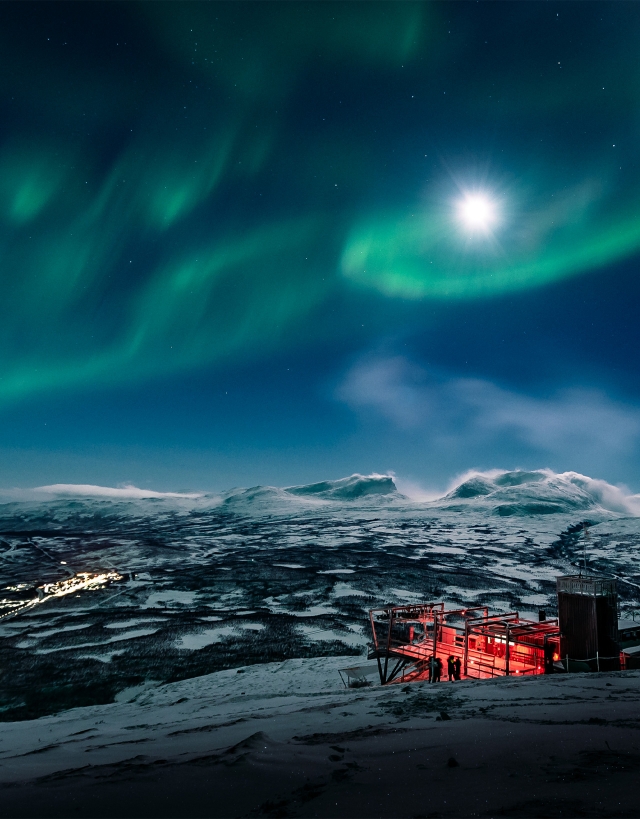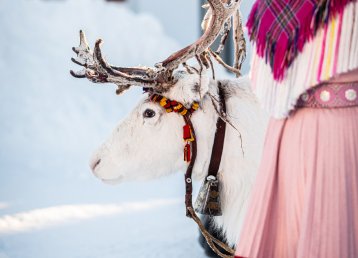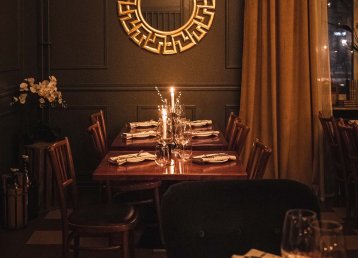First Advent
First Advent marks the beginning of Christmas. Some of us have already had a sneaky start on Christmas decorations and gingerbread, but this is when it gets going for real. Decorations and Christmas lights are added to streets, squares and gardens. Christmas stars and candles light up windows and spread their warm light on those longingly preparing for what is to come. We long for light, warmth and good food, and for the magic of Christmas to fill our homes.
Christmas market time
Christmas markets in Swedish Lapland start appearing at the end of November and the Christmas atmosphere builds up throughout December. Town squares and folk museum areas are filled with vendors and tables laden with crafts and goodies. The markets feature a rich selection of home-baked bread, knitted socks and mittens, handmade Christmas decorations and traditional crafts.
A Christmas market should be experienced at a quiet, calm pace. Ambling around the market stalls, taking a break to have some Christmas porridge in a warm cottage. If you need to warm up in the cold there is mulled wine and gingerbread, and if you are lucky the visit can end with a horse and sleigh ride in the snow-covered landscape. Perhaps you will get a glimpse of Father Christmas.
Lucia
If you are in Swedish Lapland on December 13, make sure you visit a traditional Lucia celebration. Lucia is organised in many churches around the country, featuring a choir of white-clad people in a solemn performance. The atmosphere in the church is amazing, as lights go out and the church is filled with candles. Classic Christmas songs are interspersed with modern compositions, sometimes accompanied by a smaller orchestra or beautiful organ music.
"The atmosphere in the church is amazing, as lights go out and the church is filled with candles"
If you like going to church, there are also services held in the spirit of Christmas every Advent, and on Christmas Day morning even the most infrequent of churchgoers visit the early-morning service in the local church to be reminded of the origins of Christmas long before the modern inventions Father Christmas and Christmas stress.
Atmospheric Christmas
In Sweden, the most important day in December is Christmas Eve, December 24. We spend days leading up to it by decorating our homes with stars, lights and red textiles, we bake and look for the perfect Christmas presents for our loved ones. The icing on the cake is the Christmas tree, of course, decorated with tinsel, colourful baubles, decorations made by our children, sweets and a star on top.
The Christmas tree is preferably found in the forest and every year a lot of effort goes into finding that perfect tree with an even shape. If there is a lot of snow already it is a hopeless task and usually, the Christmas tree is a very personal one, with its own charming and not-so-even shape. Either way, it provides a forest-scented touch to every nook and cranny.
Scents are something that really sets the Christmas mood in our homes and we fill it with clove-studded oranges, iced gingerbread, juniper branches, mulled wine and hyacinths. As we turn the Christmas music on, the mood is complete. The table can be set, and Father Christmas can make his appearance.
Setting a Christmas table at Brändön Lodge
At Brändön Lodge, in Luleå, a traditional Swedish Christmas table have been set since the 1980s. The kitchen make everything from scratch and when Christmas is coming a certain vibe enters the kitchen — for better and worse.
Christmas Eve arrives
As Christmas Eve arrives, the Swedes have travelled a long way to visit their loved ones and to celebrate Christmas. Every family has its own traditions, but the most important part of the day is usually the impressive Christmas buffet. A Christmas buffet in Swedish Lapland usually features plenty of fish and game. Cured or smoked salmon is a must, together with various kinds of pickled herring, served with home-made bread. The traditional Christmas ham, roasted in the oven, covered in mustard and breadcrumbs and decorated with cloves smells wonderful and it is difficult not to sneak a taste before dinner. The meatballs are there, naturally. How could we celebrate a Swedish Christmas without meatballs served with beetroot salad? It does not end there but continues with pickled-herring salad, the so-called ‘Jansson’s temptation’ with anchovies and potato, sausages, different kinds of smoked meat, potatoes, brawn, kale and so on. A Swedish Christmas buffet is something to experience with all your senses.
Once the food has been relished, sweets are produced and there is no end to the supply of chocolate, toffee, fudge and other incredibly tasty goodies available throughout the evening.
“Merry Christmas, are there any nice children in here?” breaks the silence and once again, children are shown that magic does exist.
"When will Father Christmas arrive with all the gifts?"
At 3 pm on Christmas Eve, something interesting happens in Swedish homes. Families sit down in front of the TV and watch a program called ‘Donald Duck’s Christmas’ together. Yes, you read that right. We spend an hour watching short film sequences from old and new Disney films with a Christmas theme and the highlight is a crazy exotic bird that makes Donald Duck lose his mind. In some homes, this is a virtually sacred tradition and must not be missed. Perhaps it is the parents who value this long-standing ritual, rather than the children. It remains a mystery how we manage to link this Christmas Eve entertainment to our other customs.
Once the food is eaten and evening draws near, the children’s patience begins to run out. When will Father Christmas arrive with all the gifts? Where does he come from? Will he land with his reindeer on the roof? The questions are many and the excitement evident. Suddenly someone shouts that there is a light out there in the darkness. A lantern swinging from side to side at the edge of the forest as someone comes walking towards the house. It is Father Christmas, carrying a sack stuffed with gifts over his shoulder. The bearded man knocks on the door and enters a house that is suddenly silent as if the children are holding their breath with sheer excitement. “Merry Christmas, are there any nice children in here?” breaks the silence and once again, children are shown that magic does exist. Because how else could Father Christmas get to every house in one evening?
A mixture of old and new
Christmas celebrations in Sweden today are a mixture of traditions from the old peasant society, European influences, Christian customs and Walt Disney. A combination of old and new, changing and renewing itself over time, but we do value the old.
Even before Christianity came to our country we celebrated the winter solstice, taking place on December 21–23. It was celebrated with good food and drink and in the farming community of old, Christmas meals were prepared for several months. The Christian element of Christmas is, of course, still important and many set aside time in December to visit the church on solemn occasions in memory of the birth of Jesus.
Today’s Father Christmas is a relatively new phenomenon and he is a combination of the traditional house gnome and the American Santa Claus. His predecessor was the Christmas Goat who came knocking on the door to leave home-made presents for the children.



























